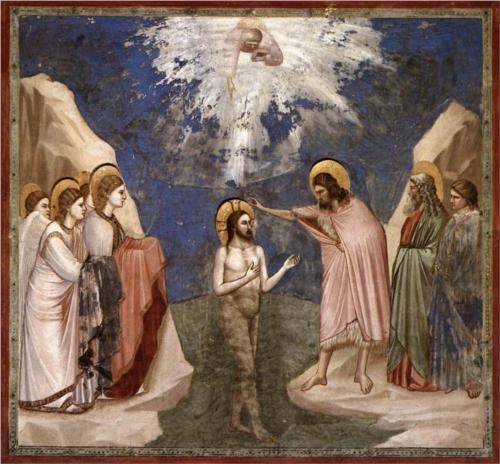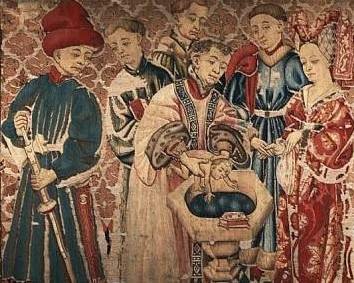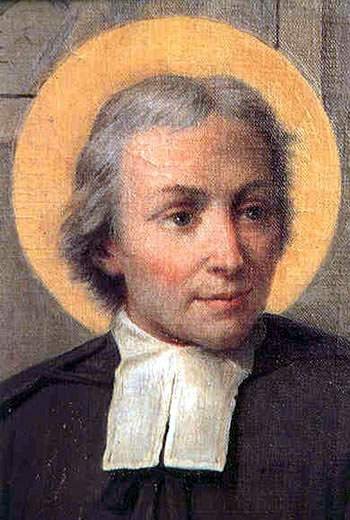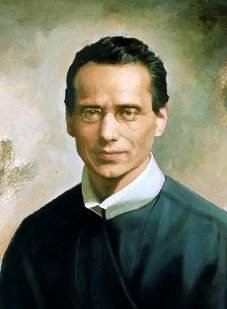
The Baptism of Christ (c. 1305), by Giotto. Scrovegni Chapel, Padua. (WikiPaintings.org)
So a year ago tomorrow — or the second Sunday in September, yesterday — I posted my first entry here, and the Lonely Pilgrim embarked on the final leg of his journey in becoming Catholic.
Last night was again the start of the new RCIA class in our parish, St. John the Evangelist Parish of Oxford, Mississippi. And I decided to attend again, to continue to learn, and to be a part of the coming into being of other new Catholics. I don’t know how, but I pray I will be of some service.

A baptism, from an early Renaissance tapestry. (Source)
I learned a few things I didn’t know before, as I continue to orient myself to the liturgy and how even the architecture of the church building plays a part in it. How Jesus on the Crucifix is always leaning toward the Gospel side of the sanctuary (the side on which the Gospel is read); how the baptized are always raised to face the east, to see the rising sun in their new birth, just as in traditional cemeteries the dead are buried facing east, to see the rising sun of their resurrection. Nothing in the church is unintentional — nothing is wasted, as Audrey says.
I learned, too, that the reliquaries of the two saints that rested in the altar of the original church building, constructed ca. 1942 and demolished 2004 to build the present one — have lost their identity. Nobody remembers or wrote down, apparently, who they were. All we know is that they are saintly men or women, and their relics now venerate the back altar, on which rests the tabernacle. The historian in me is stirred to action; surely someone wrote that down somewhere!
The central altar of the new building now houses two “new” relics: one is from St. Jean-Baptiste de La Salle (1651–1719), priest, teacher, and founder of the Institute of the Brothers of the Christian Schools (Christian Brothers), which is head over Christian Brothers University in nearby Memphis. He is a patron saint of teachers, and so his relic comes to our parish, whose primary mission is to serve the University of Mississippi and its community.
The other relic in the altar is that of Blessed Francis Xavier Seelos (1819–1867), a tireless Redemptorist priest and missionary to the poor and abandoned, whose works eventually brought him to New Orleans, where he died ministering and caring for the victims of yellow fever. He is in the final stages of canonization — and as Father Joe likes to tell, then we will have a genuine New Orleans Saint.
There are about twenty people in the RCIA class, maybe a little more. I think it will be a good group. I look forward to learning even more as I participate as an observer, not just a searcher.


